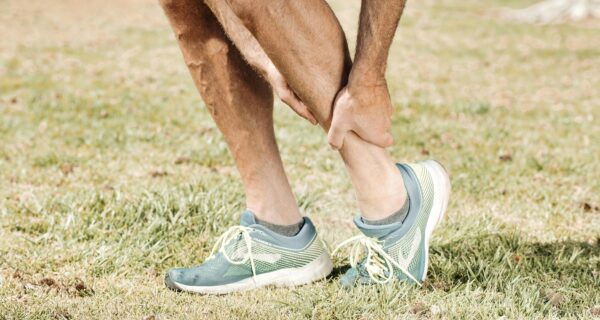Improving fitness is the cornerstone of athletic success. Whether you are a weekend warrior, a competitive bodybuilder, or a sports scientist studying performance, the ability to move faster, recover quicker, and perform at a higher level depends on how well you train and maintain your body.
In sports, fitness is more than just muscle size or endurance; it is a balanced integration of strength, agility, stamina, and recovery. Athletes who invest in building these qualities not only perform better during competition but also lower their risk of injury and extend their sporting careers.
This article explores the essential components of sports fitness, evidence-based strategies to boost athletic performance, and science-backed approaches that can help you push past plateaus. Whether your goal is peak performance or long-term health, understanding these fundamentals is key to reaching the next level.
The Key Components of Sports Fitness
Sports performance isn’t built on a single factor; it’s the result of multiple fitness elements working together. To compete at your best, you need a balance of strength, endurance, flexibility, and recovery. Let’s break down each component.
Strength and Power
Strength is the foundation of almost every sport. From sprinting and jumping to grappling and lifting, explosive strength and power allow athletes to generate maximum force in minimal time. Resistance training with compound lifts such as squats, deadlifts, and bench presses builds raw strength, while plyometric drills and Olympic lifts sharpen explosive power. Together, they enhance speed, agility, and injury resilience.
Endurance and Cardiovascular Health
While strength provides the base, endurance sustains performance. Aerobic fitness supports stamina in long-duration sports like football or cycling, while anaerobic conditioning prepares athletes for short bursts of intensity seen in basketball or wrestling. Training methods like high-intensity interval training (HIIT), steady-state cardio, and sport-specific drills develop both systems, ensuring the body can handle extended physical demands.
Flexibility and Mobility
Often overlooked, flexibility and mobility are critical for peak performance. Athletes with greater joint mobility and muscle flexibility move more efficiently, recover faster, and face fewer injuries. Incorporating dynamic stretches before workouts, static stretches after training, and practices like yoga or mobility circuits can significantly improve range of motion.
Nutrition and Recovery
No fitness program is complete without proper nutrition and recovery. A balanced diet rich in protein, carbohydrates, and healthy fats provides the fuel for performance and repair. Hydration supports muscle function, while sleep restores both body and mind. Advanced approaches such as exploring recovery aids like peptides are also gaining attention for their potential role in supporting muscle repair and endurance.
Evidence-Based Strategies to Improve Fitness
Improving sports fitness requires more than random workouts; it calls for structured, research-backed strategies. By following proven methods, athletes can maximize results while minimizing the risk of overtraining or injury.
Structured Training Programs
A well-designed program is essential for progress. Periodization, which involves breaking training into cycles of varying intensity, helps athletes peak at the right time. Progressive overloading the gradual increase of weight, volume, or intensity ensures continuous adaptation. Sport-specific drills, meanwhile, translate gym strength into functional athletic performance.
Advanced Performance Enhancers
While proper training and nutrition form the foundation, athletes often look into advanced methods to accelerate recovery and performance. Supplements like creatine, beta-alanine, and electrolytes have long been staples in sports science. Some also explore specialized research compounds such as Melanotan 2, which has gained interest in the performance and wellness community.
Monitoring and Tracking Progress
Data-driven training is a game-changer. Wearable technology, heart rate monitors, and GPS trackers allow athletes to measure speed, endurance, and recovery in real time. Regular fitness testing such as VO₂ max assessments, strength benchmarks, or flexibility scores helps identify progress and guide future adjustments. By tracking metrics, athletes can fine-tune their approach and avoid plateaus.
The Science-Backed Benefits of Improving Sports Fitness
Investing in fitness goes far beyond short-term gains; it provides lasting benefits supported by sports science and medical research. Athletes who consistently work on their strength, endurance, flexibility, and recovery experience measurable improvements in both performance and overall health.
Enhanced Strength, Speed, and Endurance
A stronger body delivers more power, while improved cardiovascular health ensures athletes can sustain higher levels of activity for longer periods. This combination leads to faster sprints, greater lifting capacity, and better on-field performance across multiple sports.
Faster Recovery and Reduced Risk of Injuries
A well-conditioned body recovers more efficiently from training and competition. Enhanced flexibility and mobility decrease the likelihood of strains, while proper nutrition and sleep accelerate healing. This means athletes can train harder, more frequently, without being sidelined by preventable injuries.
A Competitive Edge in Sports Performance
When strength, endurance, and recovery align, athletes gain a clear competitive advantage. Even marginal improvements can determine the difference between winning and falling short. By following evidence-based training and recovery strategies, athletes consistently outperform their peers.
Conclusion
Improving fitness for sports is not about focusing on one area, it’s about building a complete foundation of strength, endurance, flexibility, and recovery. Athletes who train with structure, fuel their bodies with the right nutrition, and use science-backed methods position themselves for long-term success both on and off the field.
By integrating evidence-based training programs, exploring advanced performance tools responsibly, and tracking progress consistently, you can unlock your full athletic potential. The result is not only better performance during competition but also improved health, resilience, and longevity in your sporting journey.
Ultimately, athletic performance is a reflection of preparation. The more you invest in a holistic approach to fitness, the more you’ll be able to push limits, achieve goals, and perform at your very best.












